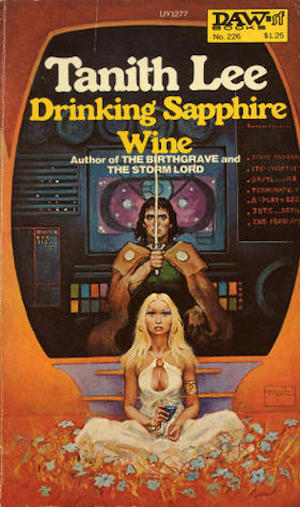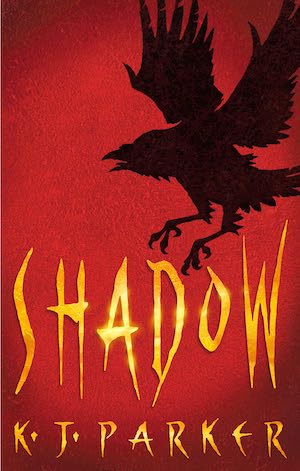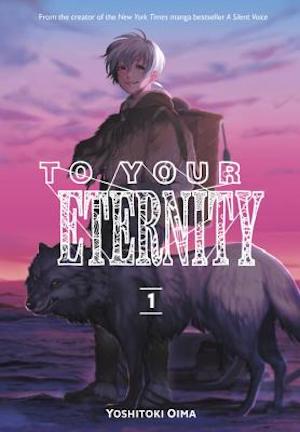All the best protagonists have names, or so one might expect. However, from time to time one encounters protagonists that are never named in the course of their particular story, a choice made for reasons other than “the author forgot1”. Perhaps the protagonist relates the story in first-person mode, and knowing who they are, has no need to name themselves. Perhaps other purposes are served….
Consider these five works with no-name protagonists.
“The Yellow Wallpaper” by Charlotte Perkins Gilman (1892)

Although she herself believes herself to be unwell, the unnamed protagonist’s physician husband John knows better. All that’s wrong is a mild depression, easily cured with involuntary confinement, total isolation in an unfamiliar house, and enforced inactivity. Is this an effective cure for depression? It’s certainly an effective way to get the protagonist to pay close attention to her prison’s yellow wallpaper.
The protagonist becomes increasingly convinced that the sickly yellow paper has an eldritch nature. There is, she is sure, a woman somehow creeping beyond the wallpaper. Skeptical John will be of no help in the matter—therefore it falls to the nameless woman to take proper action.
John only refers to his wife by endearments, possibly not considering that she has an identity of her own. As for the wallpaper: perhaps it’s just yellow wallpaper, and the narrator has become deranged by isolation. Perhaps the paper really is a supernatural horror2. Perhaps John has inadvertently selected for his wife’s cell a room whose yellow wallpaper is as toxic as arsenical green. Or perhaps the truth incorporates all three possibilities.
Drinking Sapphire Wine by Tanith Lee (1977)

The protagonist briefly tasted freedom in a previous book, Don’t Bite the Sun3. This experience brings home to the protagonist the many ways in which life in the supposed utopia of four-BEE fails to please. Luxuries abound, but the quasi-robots who run four-BEE methodically deny their human charges any meaningful activity. Rebellion and escape both appear impossible.
There is one transgression for which the quasi-robots are not prepared. When the protagonist duels and (temporarily) kills another human, the baffled quasi-robots exile the protagonist to the desert. This is a misstep. Bored youths flock to join the exile. The quasi-robots have maintained stasis for six thousand years. Alternatives are intolerable. Something…final…will have to be done about the non-conformists.
You may wonder how useful pampered youths are to the business of creating a new society in a seemingly barren wasteland. Surprisingly, the answer is “not very.”
There was supposed to be a third book in the series, and Lee reportedly had an idea what it would be about:
I had wished … to write a third book in which I would try to set out an alternative life-style, adventurous and stretching to mind and heart, but still, and importantly, free of the retributions of unprotected life. I did and do think a world would be feasible which gives pleasure and safety alongside excitement and development.
The conclusion does not appear to have been written. If it was, it was certainly not published.
Shadow by K. J. Parker (2001)

Waking on a battlefield, the battered survivor cannot recall who he is, or for which army he fought. Leaving the field of bodies behind, he encounters old acquaintances. These persons prove of little help, as their first reaction on recognizing the survivor is to try to kill him.
The survivor comes to three conclusions. First: he has an astonishing talent for killing would-be killers. Second: the frequency with which people try to kill him suggests he might not have been a nice person. Third, while he cannot change the past, he can try to be a better person in the future. The first two conclusions are correct. The third is, very unfortunately for many people, not.
In the survivor’s defense, Shadow is a black comedy by an author who loves to write narratives in which virtues are transformed into vices. Regardless of how noble the intentions, the results generally involve carnage or worse, on a biblical scale. But at least the survivor meant well.
A Nameless Witch by A. Lee Martinez (2007)

The protagonist is from birth a thing of horror and dread: supernaturally beautiful, Undead, and subject to anthropophagous urges entwined with her libido. Her relatives prudently confine the Undead beauty. Older witch Ghastly Edna frees her and trains her as a fellow witch.
An unnaturally beautiful witch compelled to consume those with whom she is smitten is an unlikely savior. Nevertheless, when normally solitary goblings are somehow inspired to form an aggressive horde, the nameless witch and her companions become the world’s bulwark. Saving the world is a tremendous challenge but at the very least, it might distract the nameless witch from how very much she wishes to eat her one true love.
As so often happens in books like these (Shadow and To Your Eternity both being examples), other characters eventually provide the nameless witch with a name. But the reader never finds out what that name is.
To Your Eternity by Yoshitoki Ōima (2016—onward)

The entity that falls to earth has no name because it has no identity. Instead, it is endlessly mutable, taking its shape and form from the objects and animals around it. The latter provide the entity with its first sense of self, if not actual intelligence.
The boy has no need of a name. Left behind by his migrating tribe, he lives alone in an arctic wilderness. The boy welcomes the entity, which is clad in the borrowed form of a now-dead wolf. Together, perhaps, the pair can follow the boy’s tribe to the paradise that the boy is sure waits for him. At the very least, the boy can inadvertently set the entity on the path towards personhood.
The convention in Western fiction is that children, no matter how misguided the child or how dire their circumstances, enjoy plot immunity. I cannot emphasize strongly enough how not true that is for the supporting characters in To Your Eternity. Indeed, the more adorable a child is, the more likely it is that they will suffer a tragic death.
There are other examples I could have named. Park Seolyeon’s 2022 A Magical Girl Retires, for example, was omitted because it was mentioned in a recent essay. Feel free to regale us with your favourite nameless protagonists in comments below.
- The authors might have wanted to vex future reviewers who might start their reviews with the name of the protagonist. But really, how likely is that? ↩︎
- It is unlikely that the yellow wallpaper is some supernatural horror, but that slim possibility is enough for me to categorize the story as fantasy horror and thus mention the story here. ↩︎
- So, titles. Lee published two books in this series, Don’t Bite the Sun and Drinking Sapphire Wine. On occasion, they have been offered together in omnibus form. These omnibuses have had at least three titles: Drinking Sapphire Wine (Hamlyn, 1979), Het Jang Fenomeen (Meulenhoff, 1989), and Biting the Sun (Bantam Spectra, 1999). Yes, it is confusing that one omnibus title is identical to the title of one of the component novels and it is also confusing that another omnibus title is a variation on the title of one of the component books. Nevertheless, please do not helpfully offer me a title correction in this matter. ↩︎










